PCB, also known as Printed Circuit Board, enables line connection and functional realization between electronic components and is an important part of power circuit design. This article will introduce the basic rules of PCB board layout and wiring today.
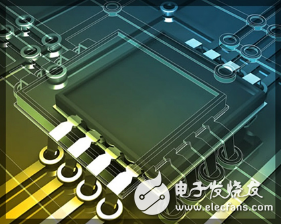
1. According to the circuit module layout, the related circuit that realizes the same function is called a module, and the components in the circuit module should adopt the principle of near concentration, and the digital circuit and the analog circuit are separated;
2. Positioning holes, standard holes, etc. shall not be placed within 1.27mm around the mounting holes. Components such as components and screws shall not be placed around 3.5mm (for M2.5) and 4mm (for M3) mounting holes.
3. Avoid the over-holes under the components such as the horizontal resistors, inductors (inserts), and electrolytic capacitors to avoid short-circuiting the vias and component housings after wave soldering;
4. The distance between the outer side of the component and the edge of the board is 5mm;
5. The outer side of the mounting component pad and the outer side of the adjacent interposing component are greater than 2 mm;
6. Metal shell components and metal parts (shield boxes, etc.) cannot be in contact with other components, and should not be in close contact with the printed wires or pads. The spacing should be greater than 2mm. The positioning hole, the fastener mounting hole, the elliptical hole and the outer side of the other hole in the plate are larger than 3 mm;
7. The heating element cannot be in close proximity to the wire and the heat-sensitive element; the high-heat device should be evenly distributed;
8. The power socket should be placed around the printed circuit board as much as possible. The power socket and the bus bar terminal connected to it should be placed on the same side. Special care should be taken not to place power outlets and other solder connectors between the connectors to facilitate soldering and power cable design and cable ties for these sockets, connectors. The spacing between the power socket and the soldering connector should be considered to facilitate the insertion and removal of the power plug;
9. Arrangement of other components:
All IC components are unilaterally aligned, and the polarity of the polar components is clearly marked. The polarity on the same printed board shall not be more than two directions. When two directions are present, the two directions are perpendicular to each other;
10, the board surface wiring should be properly dense, when the difference between the density is too large, it should be filled with mesh copper foil, the grid is larger than 8mil (or 0.2mm);
11. There should be no through holes on the chip pads to avoid solder joint loss and solder joints. Important signal lines are not allowed to pass between the socket feet;
12, the patch is unilaterally aligned, the characters are in the same direction, and the package direction is consistent;
13. Polarized devices should be as consistent as possible in the direction indicated by the polarity on the same board.
Second, the component wiring rules1. Draw wiring in the area where the wiring area is ≤1mm from the edge of the PCB board and within 1mm around the mounting hole.
2, the power cord should be as wide as possible, should not be lower than 18mil; signal line width should not be lower than 12mil; cpu input and output should not be lower than 10mil (or 8mil); line spacing is not less than 10mil;
3, the normal through hole is not less than 30mil;
4, double in-line: pad 60mil, aperture 40mil;
1/4W resistor: 51*55mil (0805 surface mount); pad 62lu when in-line, aperture 42mil;
Infinite capacitance: 51*55mil (0805 surface mount); pad 50mil in line, aperture 28mil;
5. Note that the power and ground lines should be as radial as possible, and the signal lines should not have loopback traces.
How to improve anti-interference ability and electromagnetic compatibility?
How to improve anti-interference ability and electromagnetic compatibility when developing electronic products with processors?
1, the following systems should pay special attention to anti-electromagnetic interference:
(1) A system with a particularly high clock frequency and a particularly fast bus cycle.
(2) The system contains high-power, high-current drive circuits, such as spark-generating relays, high-current switches, and so on.
(3) A system containing a weak analog signal circuit and a high-precision A/D conversion circuit.
2. To increase the system's anti-electromagnetic interference capability, take the following measures:
(1) Select a low frequency microcontroller:
The use of a microcontroller with a low external clock frequency can effectively reduce noise and improve the system's anti-interference ability. For square waves and sine waves of the same frequency, the high frequency components in the square wave are much more than the sine waves. Although the amplitude of the wave of the high-frequency component of the square wave is smaller than the fundamental wave, the higher the frequency, the easier it is to emit the noise source. The most influential high-frequency noise generated by the microcontroller is about three times the clock frequency.
(2) Reduce distortion in signal transmission
Microcontrollers are primarily manufactured using high speed CMOS technology. The static input current of the signal input terminal is about 1mA, the input capacitance is about 10PF, and the input impedance is quite high. The output of the high-speed CMOS circuit has considerable load capacity, that is, a considerable output value, and the output of one gate passes a very long period. The long line leads to the input with a relatively high input impedance, and the reflection problem is very serious, which causes signal distortion and increases system noise. When Tpd "Tr", it becomes a transmission line problem, and signal reflection, impedance matching, etc. must be considered.
The delay time of the signal on the printed board is related to the characteristic impedance of the lead, which is related to the dielectric constant of the printed wiring board material. It can be roughly assumed that the transmission speed of the signal on the printed circuit board leads is between about 1/3 and 1/2 of the speed of light. The Tr (standard delay time) of a logical telephone component commonly used in a system composed of a microcontroller is between 3 and 18 ns.
On the printed circuit board, the signal passes through a 7W resistor and a 25cm lead, and the line delay time is approximately 4~20ns. That is to say, the shorter the lead of the signal on the printed circuit, the better, the longest should not exceed 25cm. Also, the number of vias should be as small as possible, preferably no more than two.
When the rise time of the signal is faster than the signal delay time, it must be processed according to fast electronics. In this case, the impedance matching of the transmission line should be considered. For the signal transmission between the integrated blocks on a printed circuit board, the situation of Td "Trd" should be avoided. The larger the printed circuit board, the less the speed of the system should be too fast.
Use the following conclusions to summarize a rule for printed circuit board design:
The signal is transmitted on the printed board and the delay time should not be greater than the nominal delay time of the device used.
(3) Reduce the interference between signal lines:
At step A, a step signal with a rise time of Tr is transmitted through the lead AB to the B terminal. The delay time of the signal on the AB line is Td. At point D, due to the forward transmission of the A-point signal, the signal reflection after reaching point B and the delay of the AB line, a page pulse signal of width Tr is induced after Td time. At point C, due to the transmission and reflection of the signal on the AB, a width of twice the delay time of the signal on the AB line, that is, a positive pulse signal of 2Td, is induced. This is the interference between the signals. The strength of the interfering signal is related to the di/at of the C-point signal and to the distance between the lines. When the two signal lines are not very long, what is seen on AB is actually the superposition of two pulses.
The micro-control made by CMOS technology has high input impedance, high noise and high noise tolerance. The digital circuit is superimposed with 100~200mv noise and does not affect its operation. If the AB line in the figure is an analog signal, this interference becomes intolerable. For example, if the printed circuit board is a four-layer board, one of which is a large-area ground or a double-panel, and when the reverse side of the signal line is a large-area ground, the interference between the signals becomes small. The reason is that the large-area ground reduces the characteristic impedance of the signal line, and the reflection of the signal at the D-end is greatly reduced. The characteristic impedance is inversely proportional to the square of the dielectric constant of the medium between the signal line and the ground, and is proportional to the natural logarithm of the thickness of the medium. If the AB line is an analog signal, to avoid the interference of the digital circuit signal line CD to AB, there should be a large area below the AB line, and the distance from the AB line to the CD line is greater than 2 to 3 times the distance between the AB line and the ground. A local shield can be used to ground the left and right sides of the leads on the lead side.
(4) Reduce noise from the power supply
While the power supply supplies power to the system, it also adds its noise to the power supply that is being supplied. The reset lines, interrupt lines, and other control lines of the microcontroller in the circuit are most susceptible to external noise. Strong interference on the electrical network enters the circuit through the power supply. Even in battery-powered systems, the battery itself has high frequency noise. Analog signals in analog circuits are more resistant to interference from the power supply.
(5) Pay attention to the high frequency characteristics of printed wiring boards and components
In the case of high frequency, the leads, vias, resistors, capacitors, and the distributed inductance and capacitance of the printed circuit board cannot be ignored. The distributed inductance of the capacitor is not negligible, and the distributed capacitance of the inductor cannot be ignored. The resistor produces a reflection of the high frequency signal, and the distributed capacitance of the lead acts. When the length is greater than 1/20 of the corresponding wavelength of the noise frequency, an antenna effect is generated and the noise is emitted outward through the lead.
The via of the printed wiring board causes a capacitance of approximately 0.6 pf.
The packaging material of an integrated circuit itself introduces a 2~6pf capacitor.
A connector on a board with a distributed inductance of 520nH. A two-column, 24-pin integrated circuit pedestal that introduces a distributed inductor of 4 to 18 nH.
These small distribution parameters are negligible for this line of microcontroller systems at lower frequencies; special attention must be paid to high speed systems.
(6) Component layout should be properly partitioned
The position where the components are arranged on the printed circuit board should fully consider the problem of electromagnetic interference resistance. One of the principles is that the leads between the components should be as short as possible. In the layout, the analog signal part, the high-speed digital circuit part, the noise source part (such as relay, high-current switch, etc.) are reasonably separated, so that the signal coupling between them is minimized.
G handle the ground wire
Power lines and ground lines are the most important on printed circuit boards. The main means of overcoming electromagnetic interference is grounding.
For the double-panel, the grounding wire arrangement is particularly stressful. By adopting the single-point grounding method, the power source and the ground are connected to the printed circuit board from both ends of the power supply, and the power supply has one contact and one ground. On the printed circuit board, there must be multiple return ground lines, which will be gathered back to the contact point of the power supply, which is called single point grounding. The so-called analog ground, digital ground, high power device opening points, the wiring is separated, and finally gathered to this grounding point. Shielded cables are commonly used when connected to signals other than printed circuit boards. For high frequency and digital signals, both ends of the shielded cable are grounded. A shielded cable for low-frequency analog signals is grounded at one end.
Circuits that are very sensitive to noise and interference or circuits with particularly high frequency noise should be shielded with a metal cover.
(7) Use decoupling capacitors.
Good high frequency decoupling capacitors remove high frequency components up to 1 GHz. Ceramic chip capacitors or multilayer ceramic capacitors have good high frequency characteristics. When designing a printed circuit board, a decoupling capacitor is added between the power supply of each integrated circuit and the ground. The decoupling capacitor has two functions: one is the storage capacitor of the integrated circuit, which provides and absorbs the charge and discharge energy of the integrated circuit when the door is opened and closed; on the other hand, the high frequency noise of the device is bypassed. The decoupling capacitor with a typical decoupling capacitor of 0.1uf in a digital circuit has a 5nH distributed inductor. Its parallel resonant frequency is about 7MHz, which means better decoupling for noise below 10MHz, and above 40MHz. The noise hardly works.
1uf, 10uf capacitor, parallel resonance frequency above 20MHz, the effect of removing high frequency noise is better. It is often advantageous to have a 1uf or 10uf de-HF capacitor where the power supply enters the printed board, even for battery-powered systems.
For every 10 or so ICs, add a charge and discharge capacitor, or a storage capacitor. The capacitor size is 10uf. It is best not to use an electrolytic capacitor. The electrolytic capacitor is rolled up by two layers of enamel film. The rolled structure is an inductor at high frequencies, and it is preferable to use a bile capacitor or a polycarbonate capacitor.
The selection of the decoupling capacitor value is not strict, and can be calculated according to C=1/f; that is, 10 Hz is taken as 0.1 uf, and the system composed of the microcontroller can be between 0.1 and 0.01 uf.
3. Some experience in reducing noise and electromagnetic interference.
(1) High-speed chips can be used in key places without using high-speed chips.
(2) The resistance of the upper and lower edges of the control circuit can be reduced by using a string of resistors.
(3) Try to provide some form of damping for relays, etc.
(4) Use the lowest frequency clock that meets the system requirements.
(5) The clock generator should be as close as possible to the device using the clock. The quartz crystal oscillator housing should be grounded.
(6) Circle the clock area with the ground wire and keep the clock line as short as possible.
(7) The I/O driver circuit should be as close as possible to the side of the printed board, so that it can leave the printed board as soon as possible. The signal entering the printed board should be filtered, and the signal from the high-noise area should be filtered. At the same time, the signal of the string termination is used to reduce the signal reflection.
(8) The MCD useless terminal should be connected high, or grounded, or defined as the output terminal. The end of the integrated circuit should be connected to the power supply ground. Do not hang it.
(9) Do not leave the input terminal of the unused circuit, the unused input terminal is grounded, and the negative input is connected to the output.
(10) The printed board should use 45-fold lines instead of 90-fold lines to reduce the external transmission and coupling of high-frequency signals.
(11) The printed board is divided according to the frequency and current switching characteristics, and the noise component is farther away from the non-noise component.
(12) Single-panel and double-panel single-point power supply and single-point grounding, power supply line and grounding wire are as thick as possible. If the economy is affordable, use a multi-layer board to reduce the power supply and grounding inductance.
(13) The clock, bus, and chip select signals should be kept away from the I/O lines and connectors.
(14) The analog voltage input line and reference voltage terminal should be as far as possible from the digital circuit signal line, especially the clock.
(15) For A/D type devices, the digital part and the analog part are more uniform and do not pay *.
(16) The clock line is perpendicular to the I/O line and has less interference than the parallel I/O line. The clock component pins are far from the I/O cable.
(17) The component pins are as short as possible, and the decoupling capacitor pins are as short as possible.
(18) The key lines should be as thick as possible and with protective ground on both sides. The high speed line should be short and straight.
(19) Noise-sensitive lines should not be parallel to high current, high-speed switching lines.
(20) Do not route underneath the quartz crystal and below the noise sensitive device.
(21) Weak signal circuit, do not form a current loop around the low frequency circuit.
(22) Do not form a loop for any signal. If it is unavoidable, make the loop area as small as possible.
(23) One decoupling capacitor per integrated circuit. A small high frequency bypass capacitor is added to each electrolytic capacitor.
(24) Use a large-capacity tantalum capacitor or a condenser capacitor instead of an electrolytic capacitor for the circuit to charge and discharge the storage capacitor. When using a tubular capacitor, the housing should be grounded.
A 24V Dc Motor Consistency is good, reliable performance, low malfunction, torque, motor no-load and load running more smoothly and the lowest in 50 decibels
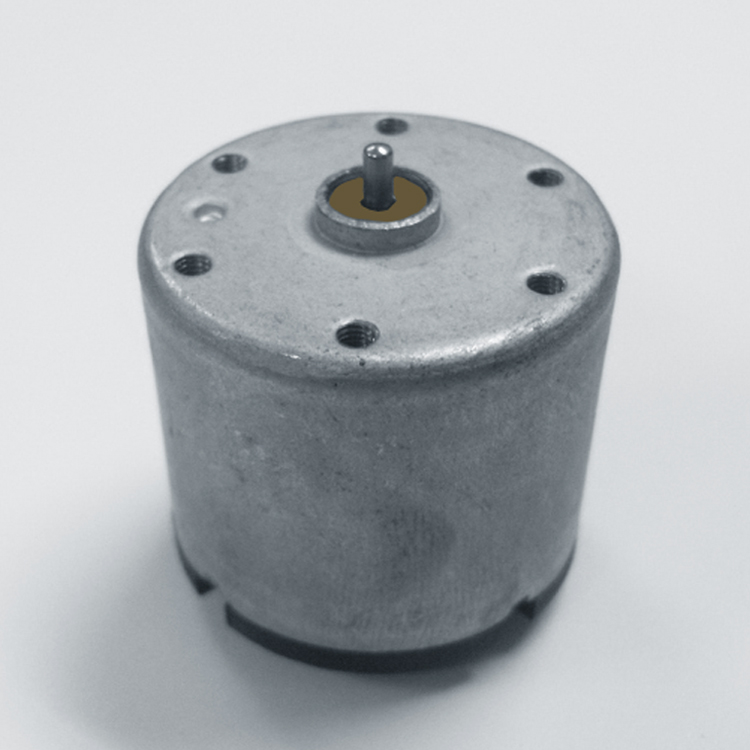
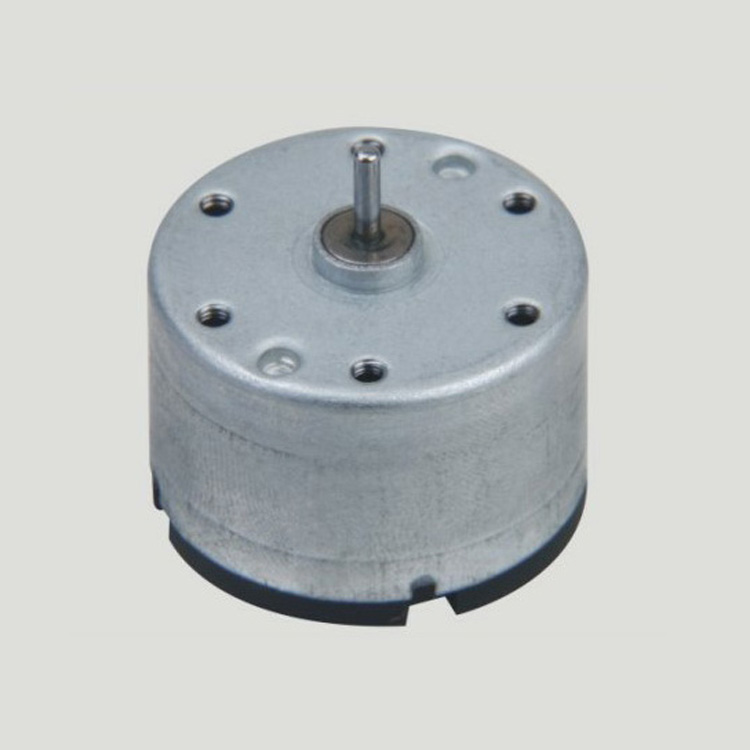
Functions: 24V dc motor rotor part of the armature iron core, armature, commutator and other devices, 24V dc motor is suitable for most of the electronic products, such as Electric curtains, car, sweeping robot, no hakaze fan, etc
Areas of application:


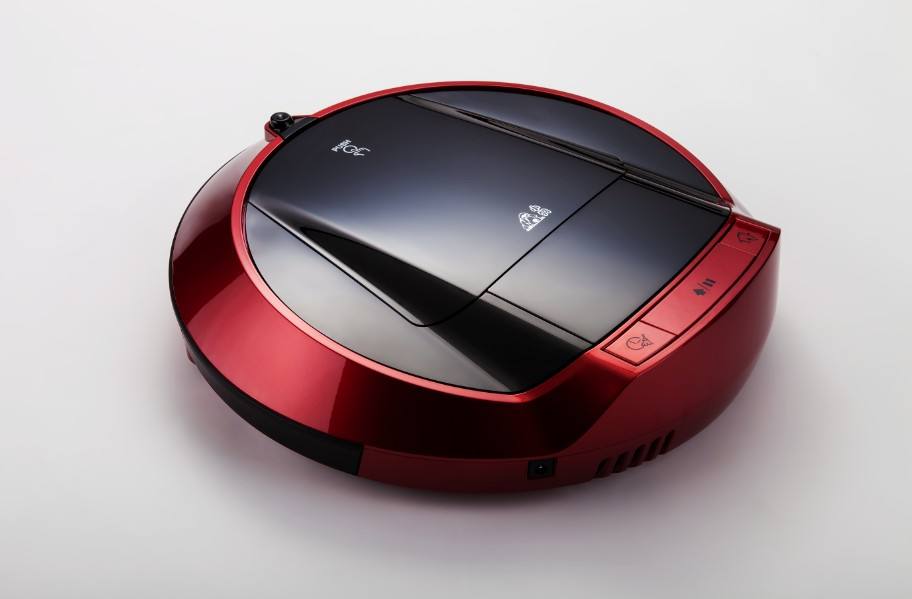
Method of use: the best stable in horizontal plane, installed on the 24V dc motor output shaft parts, cannot use a hammer to knock, knock prone to press into the 24V dc motor drive, may cause damage to internal components, and cannot be used in the case of blocked.
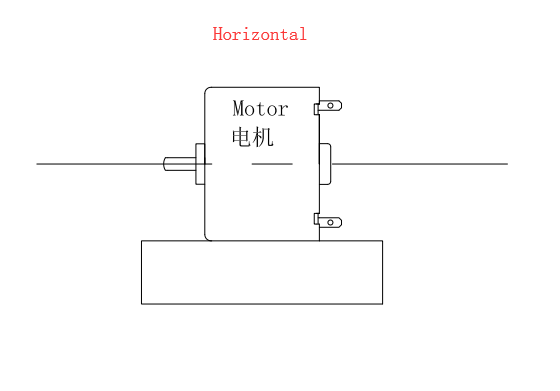
Operating temperature range:
24V dc motor should be used at a temperature of -10~60℃.
The figures stated in the catalog specifications are based on use at ordinary room temperature catalog specifications re based on use at ordinary room temperature (approximately20~25℃.
If a 24V dc motor is used outside the prescribed temperature range,the grease on the gearhead area will become unable to function normally and the motor will become unable to start.Depending on the temperature conditions ,it may be possible to deal with them by changing the grease of the motor's parts.Please feel free to consult with us about this.
Storage temperature range:
24V dc motor should be stored ta a temperature of -15~65℃.
In case of storage outside this range,the grease on the gearhead area will become unable to function normally and the motor will become unable to start.
Service life:
The longevity of geared motors is greatly affected by the load conditions , the mode of operation,the environment of use ,etc.Therefore,it is necessary to check the conditions under which the product will actually be used .The following conditions will have a negative effect on longevity.Please consult with us should any of them apply.
â—Use with a load that exceeds the rated torque
â—Frequent starting
â—Momentary reversals of turning direction
â—Impact loads
â—Long-term continuous operation
â—Forced turning using the output shaft
â—Use in which the permitted overhang load or the permitted thrust load is exceeded
â—A pulse drive ,e.g.,a short break,counter electromotive force,PWM control
â—Use of a voltage that is nonstandard as regards the rated voltage
â—Use outside the prescribed temperature or relative-humidity range,or in a special environment.
â—Please consult with us about these or any other conditions of use that may apply,so that we can be sure that you select the most appropriate model.
when it come to volume production,we're a major player as well .each month,we rurn out 600000 units,all of which are compliant with the rohs directive.Have any questions or special needed, please contact us, we have the engineer group and best sales department to service to you Looking forward to your inquiry. Welcome to our factory.
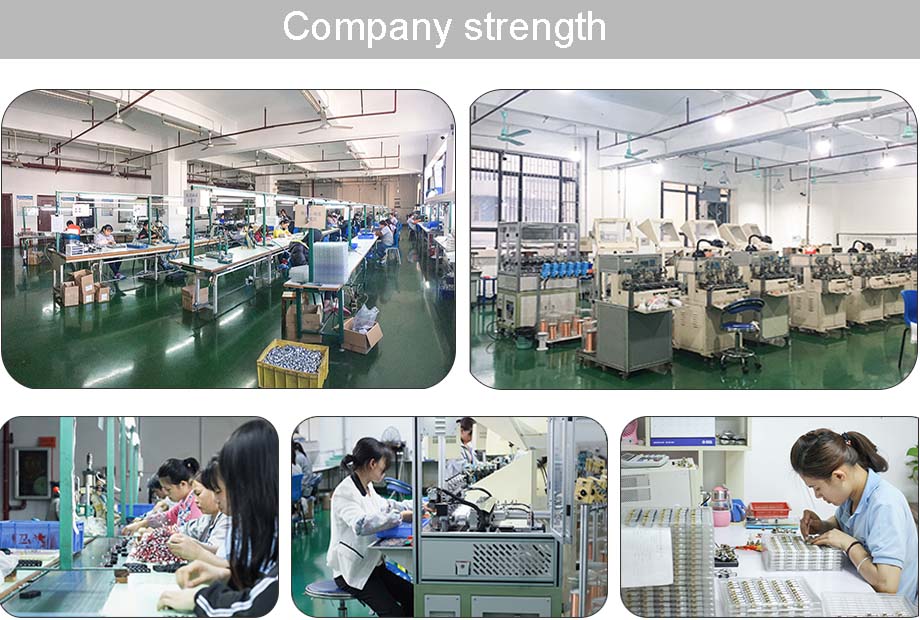
24V Dc Motor,24V Dc Micro Motor,24V Dc Electrical Motor,24V Micro Dc Motor
Shenzhen Shunchang Motor Co., LTD. , https://www.scgearmotor.com
